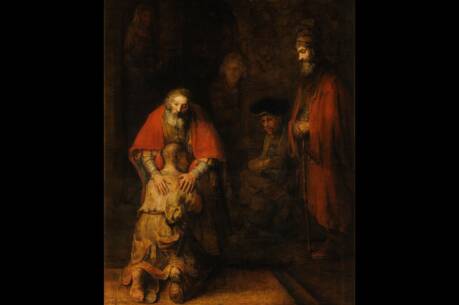Pour Out Light Unshadowed
The show “Hoarders” profiles individuals whose obsessive fear of loss causes a compulsive accumulation of unneeded things. In every episode, a mental health professional tries to help the individual break this cycle. For many, hoarding started with a catastrophic childhood loss. Memories of that death darken every succeeding event; a lifetime of reinforcement drives them to cling to anything that might protect them from another loss. They only find relief when they overcome their fear.
When Christ your life appears, then you too will appear with him in glory. (Col 3:4)
How has my life been driven by fear of death? What decisions has it affected?
What would change if I stopped fearing death?
One does not need to be a hoarder to feel the chill of death’s shadow. It is more comfortable not to acknowledge it, but we know that everything we love and rely on will pass away. Even we ourselves will return to the dust. This admission is like an icy rain that clouds our vision and numbs our hands. It can obscure every joy and steal the warmth from every moment of love.
This fear anchors and feeds our worst decisions. Fear of lost joy makes us grasp at places or things that might make us happy. Fear of losing a loved one upends otherwise happy relationships. From these inchoate fears, the deadly sins unfold: anger, pride, envy, greed, gluttony and lust; sloth comes when we despair over the inevitable dominion death has over us. These are truly death’s offspring, rising up from our deepest fears and impelling us to our most destructive behaviors.
Christ’s resurrection shows us that we no longer have to live this way. In this Easter Gospel, John is oddly specific about the condition of the burial cloths; for him, they are evidence that death has been defeated. Someone who moved or stole the body would have kept it wrapped up. The sight and smell of a putrid body would have caused disgust, and an unsecured corpse would have been a clumsy burden. Realizing this, the two apostles took the discarded winding-sheet and veil as symbols of the resurrection: the man who bore them needed them no longer. They saw and believed, even though they did not understand how it could have possibly been true.
This belief transformed them. During the Easter Vigil, the Gospel reading from Matthew told us how the two Marys left the tomb fearful yet overjoyed. Death might cast its shadow, but the resurrection fills life with light. Christ revealed that death was no longer something to be feared. Jesus says again and again in each resurrection account, “Peace! Do not be afraid!” Death is defeated!
This is the light of Easter. This is the light shared with the newly baptized during the Easter Vigil, and with all of us as we renew our baptismal vows, participating in Jesus’ death and resurrection. His death liberated us from sin; his resurrection shows new life, made visible when death’s shadow is destroyed, along with the fear of loss, defeat, isolation or despair it brings. We lose nothing when we love our enemies, bless our persecutors, forgive our transgressors and beg others for forgiveness when we must. Because we need not fear loss, we can be generous and welcoming to all. Then suddenly we realize that Jesus revealed the resurrection in every one of his deeds. Just so, in their every act his disciples must share with a death-shadowed world his brilliant and fearless light.
This article also appeared in print, under the headline “Pour Out Light Unshadowed,” in the April 3, 2017, issue.







